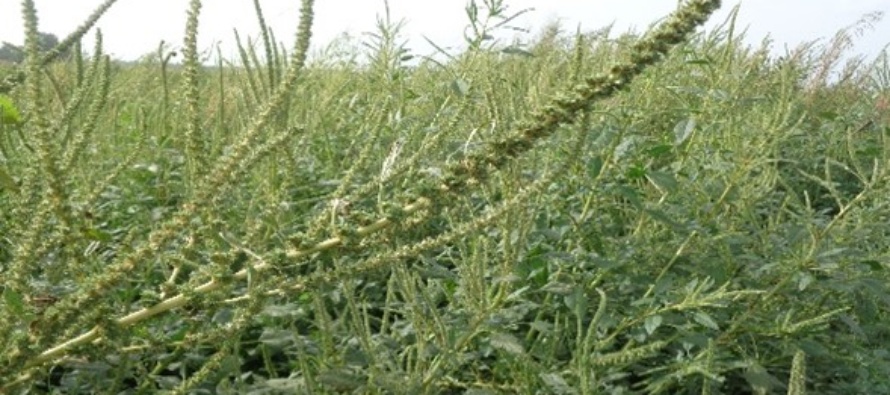Palmer amaranth

Related Articles
Latest Tweets
Palmer amaranth
Weed Flora of Mississippi
Family: Amaranthaceae
Genus: Amaranthus Species: palmeri
History: The genus Amaranthus belongs to the Amaranthaceae family and contains approximately 75 species worldwide. Palmer amaranth is one of a distinct subgroup of 10 dioecious (male and female flowers on separate plants) species within Amaranthus that are native only to North America; all other Amaranthus species are monoecious (male and female flowers on same plant). Palmer amaranth, also commonly called carelessweed, is native to the Sonoran Desert, which spans the Mexican states of Sonora and Baja and parts of southern Arizona and California.
Life Cycle: Summer annual
Special Characteristics: Palmer amaranth male and female flowers are held on separate plants (i.e., dioecious species) in long (20 inches and sometimes greater), complex, terminal inflorescences (flowers) that are usually drooping on older plants.
Roots: Taproot (reddish in color).
Stems: Erect and heavily branched
Seedling: Notched tip, no hairs, broad ovate shaped leaves, no waxy sheen.
Leaves: Leaves are arranged in an alternate pattern on the stems. Leaf blades are oval to elliptical in shape, 1 to 3 inches long and 1 to 2 inches wide, with smooth margins. Petioles are often as long, or longer than the leaf blades.
Flower: The flowers have five sepals and stiff, lance-shaped bracts. The flowers appear in both the leaf axils and densely clustered on long, thin, often drooping terminal flower spikes.
Seeds / Fruit: The fruit of Palmer amaranth is a papery and one-seeded. Seeds are small (< 0.25 inches), round to lens-shaped, smooth, shiny, and dark purple to black at maturity.
Interference: Soybean yield reductions due to Palmer amaranth interference were 22, 31, 65, and 69%, respectively, for 0.2, 0.3, 1, and 3 Palmer amaranth plants per foot of row.






Let me tell You a sad story ! There are no comments yet, but You can be first one to comment this article.
Write a comment